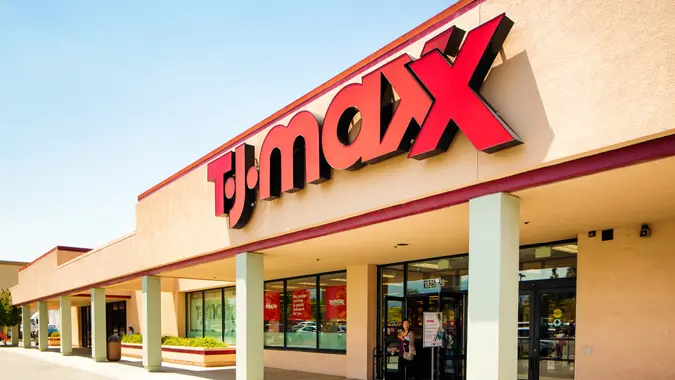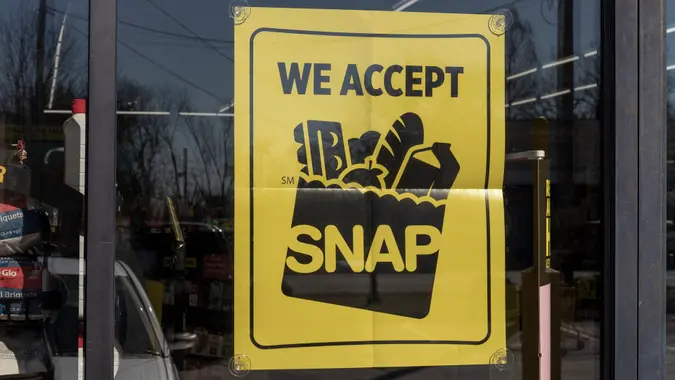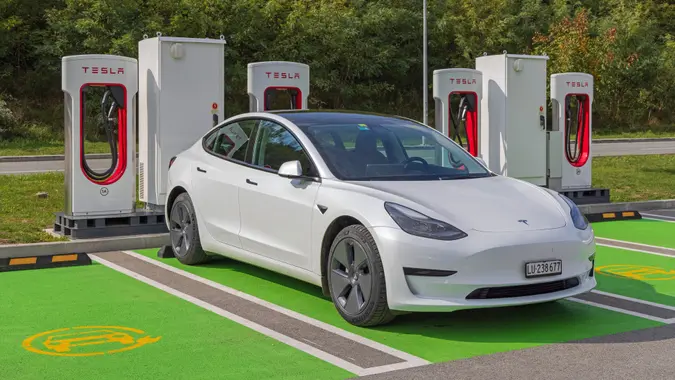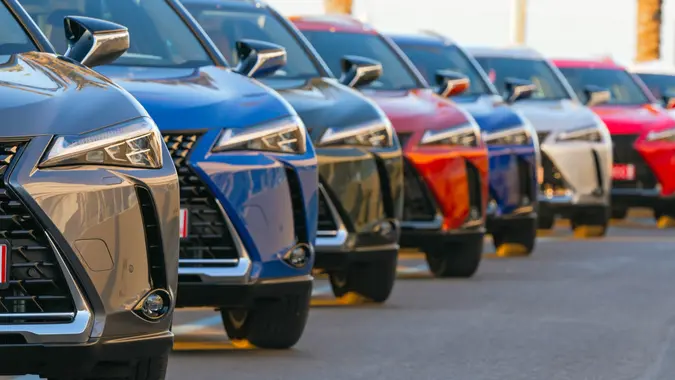7 Used Cars With the Worst Fuel Efficiency

Commitment to Our Readers
GOBankingRates' editorial team is committed to bringing you unbiased reviews and information. We use data-driven methodologies to evaluate financial products and services - our reviews and ratings are not influenced by advertisers. You can read more about our editorial guidelines and our products and services review methodology.

20 Years
Helping You Live Richer

Reviewed
by Experts

Trusted by
Millions of Readers
With new cars selling for upwards of $30,000 on average, and overall fuel costs pushing what you pay at the pump to your wallet’s limit, what kind of car you choose will directly correlate with how much you can save each month. The amount of fuel consumption of the car you go with also heavily comes into play, so knowing your vehicle’s fuel efficiency will help keep you on the right financial path.
To ensure you don’t drive home with something that bleeds your budget with frequent fill-ups, GOBankingRates identified used cars from the last 10 years with the poorest gas mileage. What your car gets in miles per gallon, or MPG, has just as much of an environmental impact as it does an impact on your bank account. Predictably, the worst offenders are supercars, hypercars and high-end luxury performance vehicles with six- and seven-figure price tags that are out of reach for all but a handful of buyers.
It’s also important to note that it’s not just the price tag on the car you have to consider, but also the interest rate that comes with your auto loan on these more expensive cars. However, a car with a forgiving sticker price could cost you more in the long run if it compromises on fuel efficiency. Here are some key takeaways about credit scores and interest averages:
- A new car buyer with an excellent credit score can secure an average interest rate of 5.25%, but that average jumps to 15.77% if you have a poor credit score.
- For used car buyers, those averages range from 7.13% to 21.55%, depending on your credit history.
Since most people aren’t scouring the used market for a gently used Rolls-Royce Cullinan, Bentley Continental or Lamborghini Aventador, the following list omits exotic vehicles. Instead, it focuses on more regular cars, trucks, vans and SUVs that gulp down gas almost as fast as you can pump it. There is one exception, though — a supercar with a fuel economy history that is too outlandishly poor to ignore.
Mercedes-AMG GLA45 4Matic
- Combined MPG: 23
As sexy as a station wagon could ever aspire to be, the Mercedes-Benz GLA class has consistently ranked among the best luxury subcompact crossovers that money can buy. But the AMG-tuned GLA45 variation — produced since 2015 — is a step above, thanks to a turbocharged inline-four that generates 150 extra ponies for 382 horsepower.
But the tradeoff for all that power is fuel economy — it gets just 20 MPG in the city and 27 on the highway for a combined 23. The 2024 model starts at $53,000 and you can find them used for less than $20,000, depending on the year and condition.
Nissan Armada 4WD
- Combined MPG: 15
Model year 2024 celebrates two decades of the Nissan Armada, a big, roomy, powerful full-size SUV that debuted as the Pathfinder Armada in 2004. The current generation started in 2017, and while it’s still a body-on-frame vehicle, it’s now based on the Infiniti QX80 instead of the Nissan Titan full-size pickup like previous generations.
Its power comes from a massive 5.6-liter, 390-horsepower V8 engine — and so does its lousy fuel economy. The 2020 model, for example, gets just 13 MPG in the city and 18 on the highway for 15 combined.
Toyota Sequoia 4WD
- Combined MPG: 15
The Toyota Sequoia has been a mainstay in the full-size SUV market for more than 20 years since its debut in 2000. It’s undergone several generational upgrades, but its Tundra lineage has been evident in its massive grill and huge cabin throughout its production run — and the four-wheel-drive version has always been as thirsty as the pickup truck on which it’s based.
For example, the 2018 model gets just 13 MPG in the city and 17 on the highway for a combined 15 MPG.
Gen 6 Ford Mustang Shelby GT500
- Combined MPG: 14
The Mustang Shelby GT500’s lineage dates back to 1967, with the current sixth generation running from 2020 to the present.
MSRPs start at around $74,000-$80,000, depending on the year, and you shouldn’t expect to get much of a break on the used market. In fact, it’s not uncommon for them to sell for more after a year or two on the road than they did brand new.
And they haven’t gotten any better on gas, either. While it gets 18 MPG on the highway, it consumes a gallon of fuel every 12 miles in the city for a combined 14 MPG.
Chevrolet Express
- Combined MPG: 12
Also known as the GMC Savana, GM introduced the Chevrolet Express in 1996 as the nameplate’s first all-new full-size cargo van since 1971. Except for minor tweaks and safety upgrades, they’re essentially the same today as when the first one rolled off the line nearly 30 years ago, making the Express “one of the longest-produced automotive designs in North American auto history,” according to Classic Vans.
While they’re adaptable, versatile, reliable and roomy, they’ve been terrible on gas from the beginning. The 2015, for example, gets 10 MPG in the city and 15 on the highway for a combined 12 MPG.
Ram 1500 TRX
- Combined MPG: 12
In 2021, Dodge unveiled a souped-up version of its successful Ram 1500 that featured a massive supercharged 6.2-liter Hemi V8 Hellcat engine that put 702 horses in motion. But an engine like that consumes gas in huge gulps, and the four-wheel-drive Ram 1500 TRX can travel only 10 miles before tearing through a full gallon in the city or 14 on the highway.
Bugatti Veyron
- Combined MPG: 10
The Bugatti Veyron ended its 10-year, industry-altering production run in 2015. According to MotorTrend, only 450 were ever produced, and the segment-defining hypercar originally started at $1.5 million in 2005, but nearly all sold well above sticker price. None, however, were good on gas.
The cost of being history’s fastest convertible — the 1,000-horsepower beast has a 253 MPH top speed — was the worst fuel economy in modern history. In its closing year, the Veryon gulped a gallon of fuel every 8 miles in the city and every 15 on the highway for a combined 10 MPG.
All MPG numbers come from FuelEconomy.gov. APR and MSRP data from Kelley Blue Book and Edmunds.
Caitlyn Moorhead contributed to the reporting for this article.
 Written by
Written by  Edited by
Edited by 

























